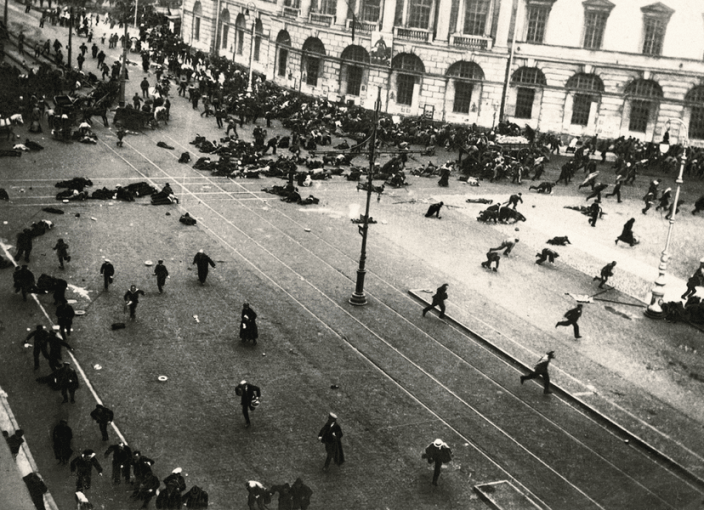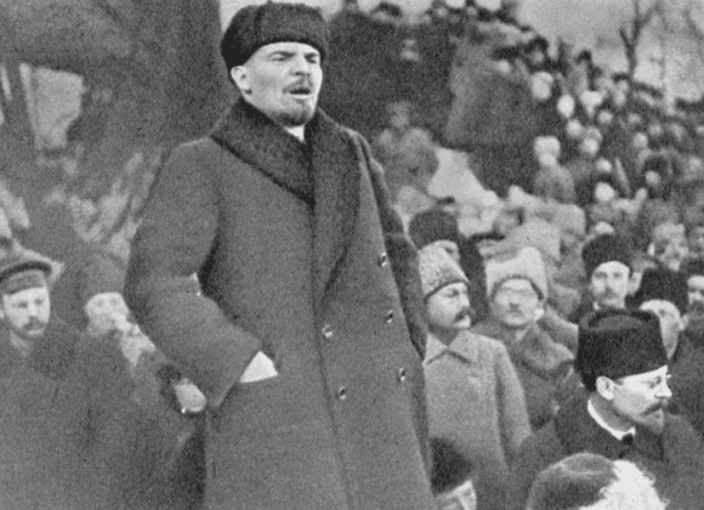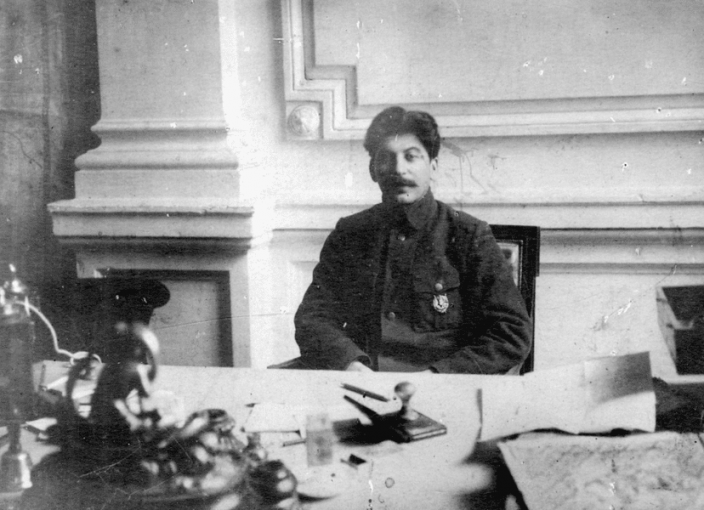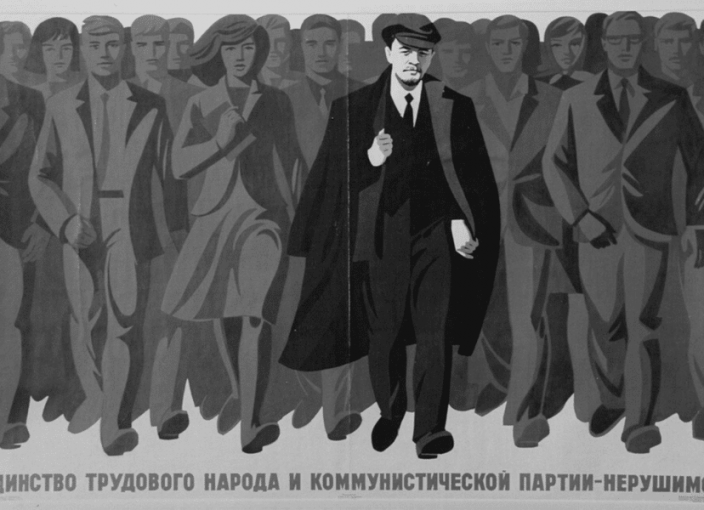Chapter 2
Tools of Communism
“As a child I perceived violence as a sort of natural law. In the totalitarian Soviet Union, oppression held everything together. It was the sinister energy of our country.”
Vladimir Sorokin1
Communist states, like other totalitarian regimes, gain and keep power by using a common set of tools. The tools fall into two broad categories: violence by terroristic state security organizations and information control. Totalitarian communist regimes have used these tools to maintain supreme rulers such as Lenin, Stalin, Mao, Kim, Castro, and their associated party elites. These rulers and elites then use the security organizations of the state to attempt to compel total obedience from their citizens, including in what people think and say and how they live every aspect of their lives. Each tool described below is used to eliminate any threat or resistance to the state — real or imagined. The use of these tools comes at a profound human cost, including millions of lives lost and many more arrested and imprisoned. Not counted among the traditional communist victims are the peoples of these countries, with countless forced sacrifices and missed opportunities of a chance at a better life. The people of every nation that has suffered under communism since 1917 are intimately familiar with all these sacrifices.
From the Promise of “Paradise” to the Reality of Violence and Terror
How could Marxism’s “paradise for the workers and all citizens of the world” result in such a brutal, violent, and murderous system of rule? In Age of Delirium, David Satter describes the ideological roots that make the crimes of communism possible. Marxism holds that everything and every person is simply matter in motion. There is no concept of God, no spirit nor soul. Marxism rejects a religious or natural world view and argues that everything and everyone is only material in a mechanical world. As merely part of the larger machine of society, men are not individuals with natural rights guaranteed by their creator and, therefore, have no claim to basic human rights.2 Marx and Engels believed that all history was shaped by the transformation of the economic conditions of production in successive conflicts between classes. This class conflict would culminate in the violent overthrow of the bourgeoisie, the middle class that owns most of the wealth as private property, by the proletariat, the workers who have nothing to sell but their capacity to work. Built on the abolition of private property, this new classless society promised radical equality, freedom, and democracy, with harmony and unprecedented wealth for all.3 While the violent overthrow and destruction of society took place everywhere communism was implemented, harmony and unprecedented wealth never appeared in any communist regime.
Petrograd during the Russian Revolution. Photo via the David King Collection.
Lenin and the Bolsheviks were the first to implement Marx’s communism, and they added to its built-in revolutionary violence. They maintained Marx’s framework and stressed the role of an elite group of disciplined professional revolutionaries that would serve as the “vanguard” party of the working class. Lenin and the Bolsheviks sought total power and claimed communist ideology made their rule as infallible and inevitable as history itself. While Marx created a world without God and the hope for eternal paradise after death, communism promised a paradise on earth without God. Amplifying Marx’s approach, Leninism mandated widespread violence in a totalitarian push to seize power.4 He and the Bolshevik minority were devoted, true believers in the promise of communism. They were also more organized, fanatical, and far more ruthless than most of the Russian government and population. They created a core of true believers who were willing to use violence to create a communist utopia in a nation weary of war, Tsarist rule, and the post-imperial government.5
Lenin speaking in 1919. Photo via Grigory Petrovich Goldstein.
The Bolshevik regime that gained power was totalitarian precisely because of its ideological nature. As the French philosopher and Russianist Alain Besancon put it, “The basic element in Communism, or the key element at any rate, is ideology. If you understand the one, you will understand the other; if you do not understand it, then you understand nothing.”6 Ideology, in the proper sense, is quite different from the way this term is used in scholarly and popular circles today. Besancon calls ideology “a doctrine that, in exchange for conversion, promises a temporal salvation that claims to conform to a cosmic order whose evolution has been scientifically deciphered and requires a political practice aimed at radically transforming society.”7 This promise of a radical transformation of the social and political world requires a strict adherence to a very particular political practice. The ideology legitimizes all revolutionary violence and persecution of perceived enemies of the regime; it also justifies the ongoing totalitarian monitoring and repression. Once communist regimes come to power, everyone must behave as if the ideological goals of the regime are being realized. Thus, a communist regime is also a system of organized lying. For example, during the 1986 Chernobyl nuclear disaster Soviet authorities denied the severity and danger to not only its people but also to the rest of the world. All to protect the image of the infallibility of communism. See Chapter 32 for more information on the Chernobyl disaster.
The violence and lying, justified by ideology and the view that man is just material for the machine of the state, has had a powerful psychological effect on people to force compliance. All individuals and everything they owned – their body, thoughts, and all their possessions—were to be mobilized in the creation of and service to the communist regime.8 From the Russian Revolution of 1917 until the collapse of the USSR in 1991, the Soviet regime used violence to gain and maintain its grip on power and enforce the illusion of a “communist paradise” just over the horizon. With no personal or property rights, communists treated people as disposable products for use by the regime to advance its goals. In the USSR, the fear of death or imprisonment compelled millions of people to obey Communist Party commands and to feign belief in Soviet propaganda, no matter how absurd or destructive. Sadly, almost 1.5 billion people still suffer under remarkably similar communist regimes and conditions today.
Violence by the Security State: Terror, Imprisonment, Torture, Execution, Repression, and Famine
As Karl Marx accurately predicted in his Communist Manifesto, communism takes hold in a country only through revolution and violence.9 Russia became the first communist state, established by the Bolshevik coup and revolution of 1917 and Vladimir Lenin. In 1918, during the Russian Civil War, Lenin established the Cheka, a terroristic secret police force, designed to protect him and the communist regime. Unlike in the United States and other democratic countries, whose intelligence and security services serve to protect the nation and people from internal and external security threats, communist security organizations’ primary role is to ensure the survival of the regime, often against their own people.10 The Cheka was the prototype for future internal security organizations in the Soviet Union and other communist countries. The Cheka’s task was to carry out executions, imprisonments, and forced relocations to labor camps (the Gulag) of any person or group viewed as a threat to the regime. During Lenin’s “Red Terror,” any citizen not aligned with the Bolshevik cause, such as kulaks and priests, were ordered to be executed.11 By 1923, over 500,000 people had died due to execution, imprisonment, and relocation to the Gulag.12 Lenin’s use of secret police to enforce his rule across the nation set the standard for future communist leaders.
Lenin’s successor, Joseph Stalin, utilized the NKVD (People’s Commissariat for Internal Affairs), one of the successor organizations to the Cheka, to eliminate any challenge to his rule during the “Great Terror” from 1936 to 1938. During this period, Stalin eliminated citizens, politicians, and military officials who dared to speak against him or whom he considered a possible threat, through mass executions and imprisonment in the Gulag.13 A new pattern of repression emerged: false and forced confessions. To force a false confession, Stalin’s regime arrested and typically subjected victims to extreme torture. These victims knew that their families also faced false imprisonment or other persecution if they did not cooperate. The state then featured the false confessions at show trials (Troikas) in which the verdict had been decided by the communists before the victims were even arrested. The regime promised “witnesses” their lives in return for their testimony against the accused.14 Out of fear and concern for their families or a fleeting hope for mercy, many victims confessed to crimes they did not commit.15 These arrests, trials, and verdicts were designed to create a pervasive fear that served to repress resistance to the state. At the height of Stalin’s Great Terror, the Soviet Politburo issued quotas to the police instructing them on the percentage of the population in their district that was to be shot or imprisoned. In July 1937, the Politburo provided a quota for “enemies of the people” to be arrested and shot without trial in each territory and region: 75,950 to be executed and 193,00 imprisoned.16 By November 1, 1938, the total number of convictions stood at 1.4 million, of which 687,000 were shot.17 Over time, the fear of being the next victim created a system of willing informants who would denounce a neighbor or family member.
Stalin spared no one, and even used family members against each other. He believed that personal relationships were less important than blind devotion to himself and the party. According to his intelligence deputy, Lazar Kaganovich, “The love for one person for another did not exist.” Stalin even viewed the wives of his inner circle as hostages to guarantee loyalty. When the communists indicted Polina Molotov, the wife of one of Stalin’s most loyal allies, for crimes against the state, only her husband Vyacheslav Molotov abstained from voting against her.18 Under Stalin’s regime, an estimated 14 million individuals (about twice the population of Arizona) were sent to the Gulag system, where over 1.6 million died from starvation, exhaustion, or execution.19 The Soviets institutionalized fear and repression to destroy the fabric of society and eliminate resistance.
Stalin in 1921. Photo via Pravda.
Other Soviet-controlled or inspired communist states created similar systems of surveillance and repression that were massive in their scope and reach. For example, the East German Stasi—the security apparatus of the GDR—employed one full-time officer for every 166 East German citizens, far more than the USSR (where the ratio was 1:583). By 1989, before the collapse of the Berlin Wall, there were over 113,000 full-time Stasi employees supported by 174,000 informants.20 Following the establishment of the Communist Party of Kampuchea (Cambodia) in 1975, Pol Pot implemented the Cambodian Genocide using soldiers from the Khmer Rouge to carry out mass executions, imprisonment, and torture. To eliminate class distinctions, the Khmer Rouge targeted educated individuals, such as doctors and lawyers, along with those who had any connection with foreign nations.21 Pol Pot also sought to abolish religion, as he and his soldiers executed Christians and Muslims and forced the large monk population to marry and renounce their faith or face execution.22 The Khmer Rouge also eradicated ethnic Thais and Laotians and forced Vietnamese and Chinese citizens to return to their homeland.23 Individuals set for execution were sent to one of the many prisons across Cambodia. Under inhumane conditions, they endured starvation and often drank their own urine to survive.24 Victims suffered a range of tortures—waterboarding, beatings, suffocation with plastic bags—and women were also systematically raped.25 The Khmer Rouge and Pol Pot killed approximately 2 million Cambodians from 1975-1979, roughly 25 percent of the population of Cambodia, to achieve their so-called communist paradise.26 Their efforts were stopped only by an invasion by their communist neighbor, Vietnam.
Man-made Famine
Man-made famine—either by state design or incompetence—has been the deadliest form of violence in communist regimes. Communist states seize all private property, including farms that have worked well and produced enough food for their communities and nations for centuries. Farmers are forced to work on collective farms where they have no incentive to produce, and where they work for communist officials who have little to no understanding of food production or farming. The most destructive communist famine occurred under Mao in China. From 1958 to 1961, an estimated 30-43 million Chinese citizens starved to death primarily due to Mao’s flawed and unworkable Great Leap Forward.27 This program saw China switch to collectivized farming that merged large collective farms into giant communes managed by communist bureaucrats with unrealistic production quotas. Incompetence led to a series of poor harvests, and the lack of food was amplified by the communists’ mismanagement of food distribution that resulted in a nationwide famine.28 In response to the poor harvests, communist leaders on the collectives lied about their yields in order to appear to meet their quotas.29 During the Great Leap Forward, Mao also launched the Four Pests Campaign that sought to eliminate rats, sparrows, flies, and mosquitos.30 This campaign contributed heavily to an already deadly famine, as the loss of sparrows caused increases in locust and insect populations that devoured any crops that were produced.31 Ultimately, Mao knowingly starved the Chinese people and killed tens of millions in order to maintain the communist myth of infallibility. China is but one example of a communist man-made famine.32
Total Information Control: Control of all Information, Propaganda, and Disinformation
In addition to direct violence and threats against their people, communist regimes understood the importance of maintaining absolute control over the information that their society received. The communists gained and maintained control of all forms of information — newspapers and printing presses initially, and later radio, TV, and the Internet. The use of propaganda and disinformation played a key role in the Soviet Union. Lenin and fellow communist propagandists attracted devoted followers who embraced the promises of the communist party and would work tirelessly with the party to achieve a worker’s paradise. The Bolsheviks promised “peace, land and bread.”33 But the cost was the loss of fundamental freedoms, a civil war, economic collapse, and famine that killed five million.34 Lenin restricted freedom of speech and the press to ensure that only pro-communist literature, monuments, and teachings reached the people.35 “Lenin’s Corners” were widespread propaganda displays of the “god-like founder of the Soviet state.” In schools, students were indoctrinated through “politicized drilling” with marches, songs, and oaths of allegiance to the new communist regime.36 The use of propaganda continued under Stalin’s reign, as did the use of disinformation externally. During the 1932-1933 Ukrainian famine (see Holodomor in Chapter 7) that left 3.6 to 6 million people dead, the Soviets, with the assistance of sympathetic Western media in Moscow (such as Walter Duranty of the New York Times and Louis Fischer of The Nation), vehemently denied the famine’s existence to the world. Duranty even attacked Welsh journalist Gareth Jones’ accurate eyewitness reporting on the Soviet-engineered famine.37
Another aspect of the communists’ propaganda was the near constant calls to rally around the regime in crises – real, imagined, or created to justify any new demand forced upon the people by the communist party. As Richard Pipes noted in Communism: A History, communist regimes thrive on crises: “Crisis alone permitted the authorities to demand – and obtain – total submission and all necessary sacrifices from its citizens. The system needed sacrifices and sacrificial victims for the good of the cause and the happiness of future generations. Crises enabled the system in this way to build a bridge from the fictional world of utopian programs to the world of reality.”38
Soviet propaganda poster. Photo via Picryl.
Party officials and propagandists emphasized these constant crises and placed the blame for any regime failure on interference of foreign agents or traitors inside the nation. These imaginary groups were accused of undermining the revolution, and provided the communists a convenient scapegoat and a rationale for the sacrifices and violent means of addressing them.39 The crises— real or invented, and mostly the latter—always claimed real victims.
By the close of World War II, as Soviet-style communism spread to the Red Army-occupied Eastern European nations, a new pattern of information control emerged. After the war, as the nations of Eastern Europe began to rebuild under Soviet occupation and control, Moscow ensured control of all radio broadcasts. The Polish, German, Czech, and other East European nationals who provided news and entertainment in their native languages spoke of only good things from the east and the Soviet Union. The communists rejected any message that did not conform to the Soviet script, and broadcasters faced the loss of their jobs or worse if they did not adhere to the communist agenda.40 Communist propaganda, disinformation, and politics permeated everything in society; arts, literature, theater, entertainment, and sports either blatantly carried the communist message or were censored so as not to offend or threaten the Communist Party. Lenin and Stalin personally interfered with the work of authors, historians, playwrights, and directors to ensure the message was clear and matched the party line.41 As technology advanced across the globe and changed, so did the communist control of information.
The Chinese Communist Party (CCP) continues to use propaganda and disinformation throughout the world. The Chinese propaganda and disinformation system originates from Yan’an, and the rectification movements carried out there in 1942.42 Mao was a master propagandist. His regime created mass mobilization campaigns that imprisoned individuals for the purpose of brainwashing, and distributed documents worshipping Mao to be memorized. The regime controlled the subject matter taught in the educational system, and dictated the content of newspapers to promote Maoist ideology.43 Currently, the Publicity Department of the Chinese Communist Party (Propaganda Department) continues to spread disinformation through party publications, the educational system, training courses, study sessions, national propaganda campaigns, and incarceration and brainwashing sessions.44 By controlling all tools of communication and all facets of life, the CCP is able to promote communist principles, such as the mobilization of mass labor, while also promoting the condemnation of foreign democratic governments or organizations that may threaten communist control.45
Like China, North Korea uses propaganda and disinformation to strengthen its control over the North Korean people. North Korea’s first communist dictator, Kim Il-sung, elevated himself to a god-like status by having thousands of statues of himself built around the country and by demanding worship from the nation’s people.46 Under Kim Il-sung’s reign, people were forced to keep a photograph of the dictator in their home or risk a fine.47 Today, after public gatherings, people sing “No Motherland Without You,” a song that praises Kim Jong-un and his ability to build the nation.48 North Korea has also obliterated the history of the Arduous March or March of Suffering famine (1994-1998), which resulted in an estimated 600,000 to 2 million deaths, by claiming it did not happen.49 North Korea’s ability to maintain power and authority stems largely from totally controlling its people’s access to information across the nation.
The combination of violence, control of information, and crises has created what George Orwell called “double think” in all communist countries. The people develop a mindset that separates life into two categories: the regime’s lies, and the people’s moral judgments and normal observations about reality.50 They recite publicly all the slogans, propaganda, and lies of the communist authorities, but the people do not believe what they are forced to say. Yet, due to the justified fear of the state, they are forced to act as though they do.






